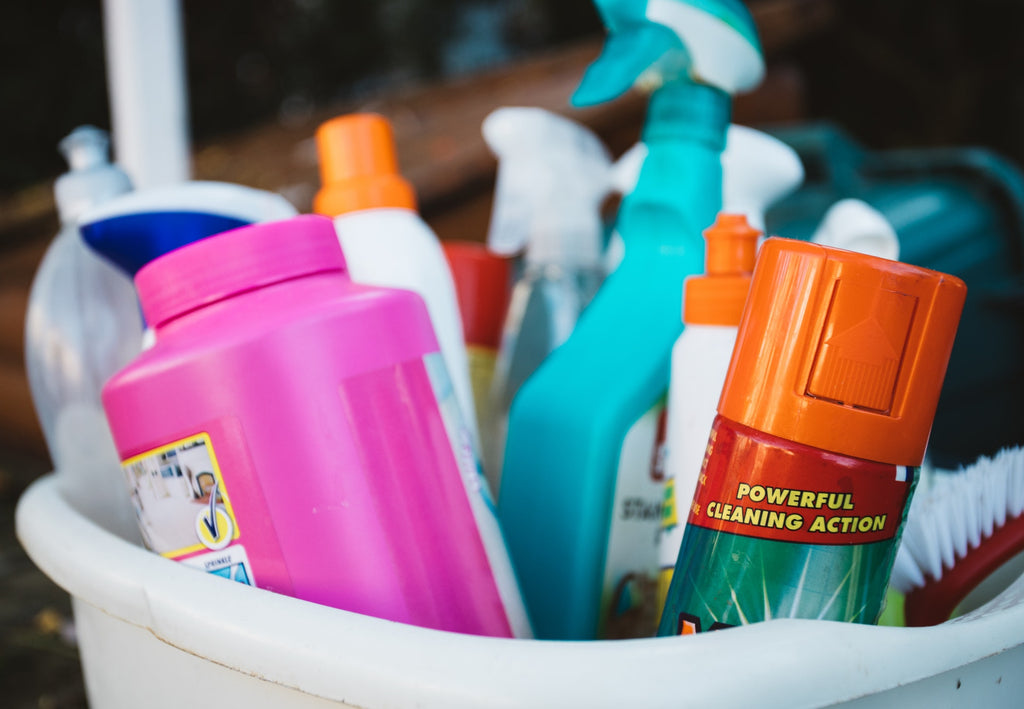Written By Arnold Williams / Reviewed By Ray Spotts
Keeping your indoor air quality fresh and safe is an essential factor for maintaining your health. That’s why you must pay attention to your indoor air quality. According to EPA studies, outdoor levels of pollutants may be two to five and sometimes even 100 times lower than the indoor levels.
And these can have impacts on your health as you spend about 90 percent of your time indoors. Thus, good indoor air quality is essential for your health and you should take measures to improve it. But first, let’s see what indoor air quality is and what factors impact it.
What is Indoor Air Quality (IAQ)?
Indoor Air Quality (IAQ) measures the cleanliness of the air inside the buildings where we live, work, and act. These are the factors that can influence IAQ:
- Chemicals and microbes, including mold, that enter the building
- Ventilation system
- Cleaning products and chemicals used in the building
Common sources of pollutants that impact the indoor air quality are the following:
- Cleaning, disinfecting, and sanitizing products
- Cigarette smoke
- Burning fuel in heaters, wood-burning stoves, etc.
- Pesticides
- Mold and mildew
- Poor ventilation, etc.
Why is IAQ essential?
Here are some long and short-term health impacts that indoor air contaminants can cause:
- Respiratory diseases including asthma
- Eye irritation
- Allergic reactions
- Headaches
- Coughing
- Dry eyes
- Fatigue
- Nausea, etc.
Now you know that IAQ pollutants can harm your health, and one of the common sources of contaminants is the cleaning products that you use daily. Let’s dive into how cleaning products impact IAQ.
Cleaning Products’ Impact On IAQ
Cleaning, disinfecting, and sanitizing products can cause indoor air pollution:
- These products produce volatile organic compounds (VOCs) that are gases coming from solids and liquids, including liquid cleaners and aerosol sprays. At room temperature, they evaporate quickly, so they can soon become part of the air you breathe when cleaning.
- Some VOCs can even react with the ozone (trioxygen) and form ultrafine particles and formaldehyde that can harm human health, as formaldehyde can cause cancer in humans.
- Cleaning products also generate particulate matter (PM) that is made up of small particles that can be carried by air. This means that people can inhale them. The smallest particles are the most dangerous ones for human health because they can go deeper into the lungs and even some of them can make their way to your blood from the lungs.
Thus, cleaning products can contaminate the indoor air by emitting VOCs, toxic air contaminants (TACs), and greenhouse gases (GHGs). These chemically-formulated products can include polishes, bleach, air fresheners, disinfectants, floor finishes, detergents, and more.
Here are some of the main health issues that VOCs can cause emitted from cleaning products:
- Eye, nose, and throat irritation
- Dizziness
- Headaches
- Allergic skin reaction
- Loss of coordination
- Fatigue
- Nausea
- Damage to the liver and kidneys
Health issues also depend on how much and how long you’re exposed to the products.
Measures to Take Not To Harm IAQ
Here are some steps you can take not to harm indoor air quality and your health:
- Avoid using scented products, including air fresheners that can be a source of indoor air contaminants.
- Don’t mix cleaning products as their combination can cause the emergence of toxic gases.
- Always read the label: if the product must be in a well-ventilated area, take it to places with exhaust fans. If you must keep it indoors, then open windows regularly.
- Use safe products that are certified by EPA.
- After cleaning and disinfecting the surfaces, rinse the surface using water. Any ozone present in the air will react with dried cleaning chemicals that stay on surfaces. Thus, rinsing the surface with water when possible is essential.
- Always use proper ventilation during and after cleaning. Regularly open windows, doors and turn on fans to provide outdoor fresh air into the home.
- Limit or avoid using products and fresheners that contain citrus oils or pine as they can react with smog (especially in summer) and form hazardous chemicals, including formaldehyde.
Sometimes you can use simpler methods for cleaning areas or surfaces. For example, you can buy wet wipes online at Hyex and clean surfaces with them. Or maybe you can use baking soda for scrubbing and a mixture of water and vinegar to clean glasses.
And as always our popular soap and water solutions often are the best cleaners for surfaces, so if possible use them instead.
Now as you know all the essentials, make the right choice and choose products that are safer for both the indoor air and your health. Keep you healthy and clean your home by considering the above-mentioned steps.
Subscribe to our Trusted Health Club newsletter for more information about natural living tips, natural health, oral health and skincare. If you are looking for more health resources make sure to check out the Trusted Health Resources list.
Written By:
Arnold Williams is a content generalist at Hygiene Express. He works with a dynamic team of writers and marketers. His educational background in journalism has given him a broad base to approach many topics professionally.
Reviewed By:
Founder Ray Spotts has a passion for all things natural and has made a life study of nature as it relates to health and well-being. Ray became a forerunner bringing products to market that are extraordinarily effective and free from potentially harmful chemicals and additives. For this reason Ray formed Trusted Health Products, a company you can trust for clean, effective, and healthy products. Ray is an organic gardener, likes fishing, hiking, and teaching and mentoring people to start new businesses. You can get his book for free, “How To Succeed In Business Based On God’s Word,” at www.rayspotts.com.
Photo by Ellie Burgin from Pexels




